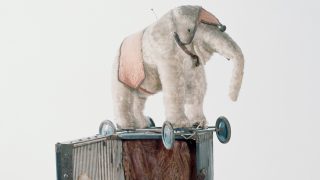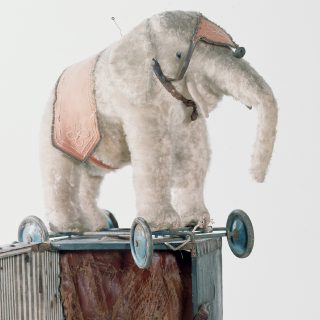Espoo Museum of Modern Art


11.11.2011 - 17.03.2013
The World in a Box: Assemblage by Juhani Harri
From 11.11.2011, the Sali gallery will feature the Saastamoinen Foundation Art Collection’s exhibition The World in a Box – Assemblage by Juhani Harri. Juhani Harri (1939–2003) was the pioneer of Finnish assemblage art. In his New Realist works everyday objects from life and nature are transformed and given a new life.
The 70 works in the exhibition come mainly from the Saastamoinen Foundation Art Collection and the Deposit Collection of the Pori Art Museum, augmented by others from the EMMA – Espoo Museum of Modern Art Collection and a few from private collections. Together they cover a period from the early 1960s to the first years of the 2000s.
“I can use quite ordinary things […] in the same way as paints and brushes, and combine them in the same way…”
”You have to find everything”
Juhani Harri (originally Juhani Sakari Wirtanen) was born near Vaasa, the son of a pastor. At first he wished to become an ornithologist, but subsequently became interested in art. He moved to Helsinki in 1959, thinking of taking up ceramics, but instead began studying at the Free Art School.
In Helsinki Harri familiarised himself with the work of the avant-gardists of his age, the urban culture artists of American Pop Art and their precursors like Jasper Johns and Robert Rauschenberg. Likewise he felt drawn to the works of artists belonging to the French Les Nouveaux Réalistes group – Arman, Daniel Spoerri and Yves Klein. New Realism was a counter reaction to Informalism with its rejection of representational and geometrical form. The realist approach involved using familiar everyday objects in art works. The assemblages made by Harri from worn, used and found objects are examples of how New Realism was expressed in Finland. In his works he combined elements found in nature like egg shells, leaves and sand, treating them with paint or some other technique to give them a new form.
Juhani Harri: A Little Night Music (1992), Saastamoinen Foundation Art Collection / EMMA Photo: Matti Ruotsalainen
Harri did not set out to buy the objects for his works as he believed that “everything has to be found, a sudden light, aura, atmosphere around something makes it significant”. For example, a broken violin is no longer any use as an instrument, all that remains is the shape – it’s abstracted, simplified. Harri was also interested in the American composer John Cage’s ideas on the role of art and life in creative work. In his experimental compositions, Cage produced collages of the sounds of ordinary life, even silence.
My works are realistic. I really consider myself a realist. If, for example, they should contain butterflies and insects then they will contain butterflies and insects. Like Andy Warhol has said, if you want to seek and find something from my work, it’s all on the surface.
Juhani Harri, circa 1980 Photo: FNG/CAA/Seppo Hilpo
From 1964 Harri began making compositions in boxes which, when sealed behind glass, became worlds of their own. Later the boxes grew into even room-size installations. The boxes could be fruit boxes or suitcases. The name of the exhibition The World in a Box refers to both Harri’s way of making art as well as the all important theme of travelling. Roads always fascinated Harri as they bore the tracks of travellers past.
The extensively illustrated catalogue for the exhibition published by the Saastamoinen Foundation includes an article by essayist and philosopher Antti Nylén “The Balance of Forces”.